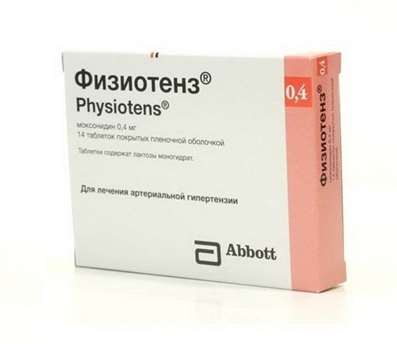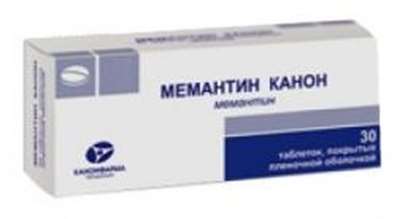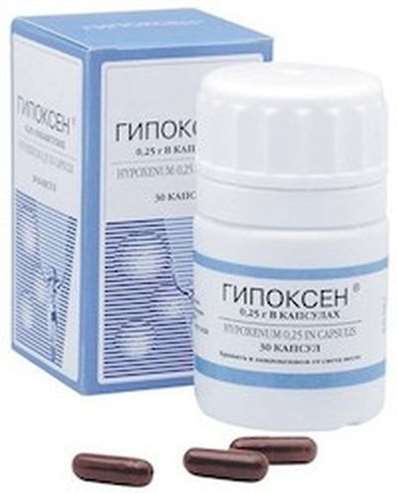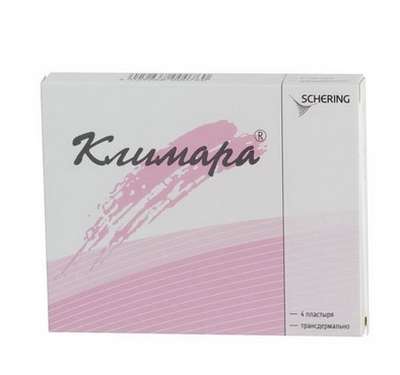Instruction for use: Trental 400
I want this, give me price
Dosage form: Film-coated tablets of prolonged action
Active substance: Pentoxyphyllinum
ATX
C04AD03 Pentoxifylline
Pharmacological group
Vasodilator [Angioprotectors and microcirculatory correctors]
The nosological classification (ICD-10)
E14.5 Diabetic ulcers: Gangrene diabetic; Sclerosis of Menkeberg; Severe vascular complication of diabetes; Diabetic gangrene; Diabetic foot; Diabetic ulcers; Infected diabetic foot; Diabetic Foot Syndrome; Foot diabetic
F90.0 Violation of activity and attention: Hyperactive child syndrome; Attention Deficit Disorder in Children; Hyperkinetic impulsive syndrome; Violation of attention with hyperactivity; attention deficit; Attention deficit in children; Difficulty concentrating; Concentration reduction; Violation of attention; Impaired concentration; Concentrating defect; Violation of mental activity; Violation of the ability to concentrate; Impairment of concentration; Violations of attention; Inability to concentrate; The weakening of attention; The weakening of the ability to concentrate; Decrease ability to concentrate; Reduced focus; disorders of attention; attention disorder; Attention Deficit Hyperactivity Disorder; Reduced attention; Reduced concentration; Decreased ability to concentrate
H31.9 Vascular system diseases, unspecified: Angiospasm of the choroid; Angiospastic changes in the choroid; Atherosclerotic changes in the retina and choroid; Diseases of the choroid; Change in the mesh and choroid of the eye; Circulatory disturbances in the choroid of the eye; Disturbances of blood supply to the choroid of the eye; Vascular changes in the choroid of the eye; Thrombosis of the arteries of the choroid
H35.9 Retinal disease, unspecified: Retina dystrophy; Vascular pathology of the retina; Angiospastic changes in the retina and choroid; Dystrophic retinal disease; Dystrophic retinal lesion; Dystrophic lesion of the retina of the eye; Change in the mesh and choroid of the eye; Cystoid macular edema after surgical removal of cataracts; Circulatory disturbances in the retina of the eye; Disorders of blood supply to the retina; Disorders of blood supply to the retina; Vascular diseases of the retina; Vascular disorders in the retina of the eye; Vascular spasm of the retina; Retina angiospasm
H80 Otosclerosis
H91 Other hearing loss: Age-related vascular hearing loss; Age-related vascular drop in hearing; Age-related hearing impairment; Idiopathic hearing loss; Decreased acuity of hearing; Hearing loss; Deteriorating hearing of vascular or toxic origin; Perceptual hearing loss
H93.0 Degenerative and vascular diseases of the ear: Degenerative changes on the background of the pathology of the vessels of the inner ear; Vascular hearing impairment
I63 Cerebral infarction: ischemic Stroke; Ischemic brain disease; Ischemic stroke; Ischemic stroke and its consequences; Ischemic cerebral stroke; Ischemic cerebrovascular accident; Ischemic brain damage; Ischemic brain damage; ischemic conditions; Cerebral ischemia; Acute hypoxia brain; Acute cerebral ischemia; Acute ischemic cerebrovascular accident; Acute cerebral infarction; Acute ischemic stroke; Acute period of ischemic stroke; Focal cerebral ischemia; Ischemic stroke; recurrent stroke; The syndrome of Morgagni-Adams-Stokes; Chronic cerebral ischemia; cerebrovascular stroke; embolic stroke; Ischemic brain damage
I67.2 Cerebral atherosclerosis: Atherosclerosis of the arteries of the brain; Atherosclerosis of cerebral vessels; Atherosclerotic changes in cerebral vessels; Vascular diseases of the brain; Sclerotic ischemic attacks; Sclerosis of cerebral vessels
I67.9 Cerebrovascular disease, unspecified: lacunarity status; Angioneyropatiya; Arterial angiopathy; brain hypoxia; Encephalopathy; cerebral vascular disease and age-related; Coma in violation of cerebral circulation; Metabolic and cerebrovascular disorders; Violation of the blood supply to the brain; Cerebrovascular accidents; Violation of brain functions; Violation of the functions of the cerebral cortex; Violation of cerebral circulation; Cerebrovascular insufficiency; Acute cerebrovascular insufficiency; Acute ischemic attack; The defeat of the brain vessels; The progression of destructive changes in the brain; Disorders of cerebral circulation; The syndrome of cerebral insufficiency; Cerebral vascular insufficiency; Vascular encephalopathy; Vascular diseases of the brain; Vascular brain disorders; Vascular lesions of the brain; Functional brain disorders; Chronic cerebral ischemia; Chronic heart failure; Chronic cerebrovascular insufficiency; Chronic cerebrovascular insufficiency; Chronic violation of the blood supply to the brain; Cerebral insufficiency; Cerebral organic failure; encephalasthenia; cerebroasthenic syndrome; Cerebrovascular disease; Cerebrovascular pathology; cerebrovascular disease; cerebrovascular disorders; cerebrovascular disorders; Encephalopathy discirculatory
I69 The effects of cerebrovascular disease: Ischemic and post-stroke condition; Residual effects of hemorrhagic stroke; Residual effects of ischemic stroke; Residual effects of cerebral circulation; Residual effects of subarachnoid hemorrhage; Ischemic stroke; Transferred thromboembolic stroke; The consequence of cerebrovascular accident; The consequence of insufficient blood supply to the brain; Consequences of ischemic stroke; The consequences of a stroke; Postapopleksicheskoe state; post-stroke period; post-stroke syndrome; Condition after stroke; Condition after cerebrovascular accidents; Chronic cerebrovascular insufficiency
I69.3 Consequences of cerebral infarction: Ischemic stroke and its consequences; Post-stroke state; Postponed stroke
I69.4 Stroke consequences, not specified as a hemorrhage or cerebral infarction: States after a stroke; Post-stroke state; The consequence of a stroke
I70.2 Atherosclerosis of arteries: arteriosclerosis obliterans; Arteriosclerosis peripheral arteries; Atherosclerosis of the arteries of the lower extremities; Atherosclerosis of peripheral arteries; Atherosclerosis limbs; Occlusive disease of the lower extremities; arteriosclerosis obliterans; Arteriosclerosis obliterans of lower limb arteries; Atherosclerosis obliterans of the upper limbs; Arteriosclerosis obliterans of lower extremities; Atherosclerosis of arteries; limb arteriopathy; Arteriosclerosis obliterans limbs; arteriosclerosis obliterans
I73.8 Other specified peripheral vascular disease: Syndrome of intermittent claudication; endarteritis obliterans; acrocyanosis; vasoconstriction; occlusive disease; Intermittent claudication; Disorders of vascular innervation; Spasm of peripheral arteries; Arterial angiopathy; Venous insufficiency and its complications; Spasm of peripheral vessels; The spasm of coronary vessels; endarteritis; cooling stop; Occlusal disorders of peripheral circulation; Peripheral vascular occlusion
I79.2 Peripheral angiopathy in diseases classified elsewhere: diabetic angiopathy; Angiopathy in diabetes; arteriosclerosis diabetic; Pain in lesions of peripheral nerves; Diabetic angiopathy; Diabetic microangiopathy; Diabetic vascular disease; Intermittent angioneurotic disbaziya; Macroangiopathy in diabetes; microangiopathy; Microangiopathy in diabetes mellitus; Tingling sensations in the hands and feet; Coldness in the extremities; Peripheral angiopathy; Peripheral arterial disease; Sclerosis Menkeberga; Chronic obliterating diseases of arteries
L97 Ulcer of lower limb, not elsewhere classified: Trophic ulcers of lower legs; Trophic ulcers of lower leg; Trophic ulcers of the skin of the extremities; Trophic ulcers of the extremities
L98.4.2 * Trophic skin ulcer: Varicose ulcer; Varicose ulcers; Cutaneous ulcer; Non-healing ulcers; Trophic ulcer; Trophic ulcer of lower leg; Trophic skin lesions; Trophic after-burn ulcers; Trophic ulcers; Trophic skin ulcers; Ulcer of lower leg; Ulcer of skin; Ulcer of trophic skin; Ulcer on legs; Ulcerative necrosis of the skin; Ulcer of shin; Ulcer of the lower leg; Ulcers of lower extremities; Difficult healing ulcers
R02 Gangrene, not elsewhere classified: Atherosclerotic gangrene; Gangrene; Gangrene of the extremities; The fire of Saint Anthony
R41.3.0 * Reduced memory: memory loss; memory impairment; The weakening of memory; memory impairment; Forgetfulness; Violation memory; Memory impairment in elderly patients; memory impairment; Memory impairment in relation to recent events
R41.8.0 * Disorders intellectual mnesticheskie: Secondary violations mnemonic functions; Difficulty concentrating; The difficulty of mental activity; Intellectual impairment; Intellectual-mental breach; Intellectual-mental disorder; psychic infantilism; Cognitive impairment; Violation of intellectual; Violation of mnemonic functions; Violation of intellectual activity; Violation of thinking; Violation of mental capacity; Violations of intellectual functions; Violations of thinking; Weakening intellectual productivity; Backlog of mental development; Primary disorders mnemonic functions; Lowering the intellectual productivity; Lowering the intellectual-mental functions; distraction; thought disorder; thought disorder; The decline of intellectual efficiency; Reduced intellectual-mental functions; Reducing the intellectual capacity; The decline of mental abilities; The decline of mental abilities in the elderly; The decline of mental function; The decline of mental function; Reduced memory in old age; Reduced mental activity; Reduced intellectual level; The deterioration of intellectual-mental functions; Chronic disorders of mental capacity
R42 Dizziness and disturbance stability: vertigo; Dizziness; Dizziness and nausea during travel on transport; disorders of balance; vestibular disorders; disequilibrium; Ischemic disorders of hearing and balance
R54 Age-related disease: External signs of aging; Age-related eye disease; Age-related visual impairment; Age-related vascular disease; Age constipation; Age-related changes in visual acuity; Age-related changes in the brain involutional; Age-related disorders; Age-related hearing loss; gerontological practice; senile dementia; Deficiency of calcium and vitamin D3 in the elderly; cerebral vascular disease and age-related; involutionary depression; involutional depression; Correction of metabolism in middle and old age; Malnutrition in elderly and senile age.; senile dementia; senile dementia; senile depression; senile colpites; senile psychosis; Syndrome of age involution; Hearing loss age; Aging; Brain Aging; The aging of the organism; senile dementia; senium; Senile involutional psychosis; senile psychosis; Memory impairment in elderly patients; Conduct disorders in the elderly
Composition
Film-coated tablets of prolonged action - 1 tab.
active substance: Pentoxifylline - 400 mg
Auxiliary substances: povidone - 10 mg; Hyethelose (hydroxyethyl cellulose) - 140 mg; Talc - 12.5 mg; Magnesium stearate 2.5 mg
Membrane film: hypromellose - 10.902 mg; Titanium dioxide (E171) - 2.68 mg; Talc - 0.82 mg; Macrogol 8000 - 0.55 mg
Description of dosage form
Tablets of prolonged action: oblong, biconcave, covered with a film coat of white color. On the one hand tablets - engraving "ATA"
Pharmacology
Mode of action – Vasodilator.
Pharmacodynamics
Trental 400 improves the rheological properties of blood (fluidity) by affecting the pathologically altered erythrocyte deformability, inhibiting platelet aggregation and decreasing the increased blood viscosity. Trental®400 improves microcirculation in areas of impaired blood circulation.
As an active ingredient, Trental®400 contains a xanthine-pentoxifylline derivative. The mechanism of its action is associated with the inhibition of phosphodiesterase and the accumulation of cAMP in the cells of the smooth muscles of blood vessels and blood cells.
Having a weak myotropic vasodilator effect, pentoxifylline somewhat reduces OPSS and slightly dilates the coronary vessels.
Treatment with Trental®400 leads to an improvement in the symptoms of cerebrovascular accidents.
In occlusive diseases of peripheral arteries, the use of Trental® 400 leads to an increase in walking distance, elimination of night cramps in gastrocnemius muscles and the disappearance of pain at rest.
Pharmacokinetics
After ingestion, pentoxifylline is almost completely absorbed.
Pentoxifylline undergoes the effect of a primary pass through the liver. Absolute bioavailability of the initial substance is (19 ± 13)%. The concentration of the main active metabolite 1- (5-hydroxyhexyl) -3,7-dimethylxanthine (metabolite I) in blood plasma is twice the concentration of the original pentoxifylline. Metabolite I is with pentoxifylline in reversible biochemical redox equilibrium. Therefore, pentoxifylline and metabolite I are considered together as an active unit. As a consequence, the availability of the active substance is much greater.
The prolonged release of pentoxifylline allows maintaining its constant (peak-free) concentration in the blood, which ensures a better tolerance of the drug in this dosage form.
T1 / 2 pentoxifylline after ingestion is 1.6 hours.
Pentoxifylline is completely metabolized and more than 90% is excreted through the kidneys in the form of unconjugated water-soluble metabolites.
Patients with impaired renal function. In patients with impaired renal function, excretion of metabolites slows down.
Patients with impaired liver function. In patients with impaired liver function T1 / 2, pentoxifylline is extended and absolute bioavailability is increased.
Indications of Trental 400
Occlusal disease of peripheral arteries of atherosclerotic or diabetic origin (eg intermittent claudication, diabetic angiopathy);
Trophic disorders (eg, trophic ulcers of the legs, gangrene);
Disorders of cerebral circulation (consequences of cerebral atherosclerosis, such as reduced concentration, dizziness, memory impairment), ischemic and post-stroke conditions;
Circulatory disorders in the retina and choroid of the eye;
Otosclerosis, degenerative changes on the background of the pathology of the vessels of the inner ear and hearing loss.
Contraindications
Hypersensitivity to pentoxifylline, other methylxanthines or to any of the components of the drug;
Massive hemorrhages, extensive hemorrhages in the retina of the eye, hemorrhages in the brain;
Acute myocardial infarction;
pregnancy;
The period of breastfeeding;
Children's age till 18 years.
Carefully
Severe cardiac rhythm disturbances (risk of worsening of arrhythmia);
Arterial hypotension (risk of further decrease in blood pressure - see "Method of administration and dose");
Chronic heart failure;
Peptic ulcer of the stomach and duodenum;
Impaired renal function (Cl creatinine below 30 ml / min) (risk of cumulation and an increased risk of side effects, see "Method of administration and dose");
Severe dysfunction of the liver (risk of accumulation and an increased risk of side effects, see "Method of administration and dose");
Condition after a recent surgery;
Increased risk of bleeding (for example, if there are abnormalities in the blood coagulation system (risk of developing more severe bleeding - see "Interaction");
Simultaneous use with anticoagulants (including indirect anticoagulants (antagonists of vitamin K - see "Interaction");
Simultaneous use with platelet aggregation inhibitors (clopidogrel, eptifibatid, tirofiban, epoprostenol, iloprost, abciximab, anagrelide, NSAIDs (other than selective inhibitors of COX-2), acetylsalicylic acid, ticlopidine, dipyridamole - see "Interaction");
Simultaneous use with hypoglycemic agents (insulin and hypoglycemic agents for oral administration - see "Interaction");
Simultaneous application with ciprofloxacin (see "Interaction").
Pregnancy and breast-feeding
The drug Trental® 400 is not recommended for use in pregnancy (because insufficient data).
Pentoxifylline penetrates into breast milk in small amounts. If it is necessary to use the drug should stop breastfeeding (given the lack of experience of use).
Side effects
Below are the side reactions that were noted in clinical trials and in the post-marketing application of the drug (the frequency is unknown).
From the nervous system: headache, dizziness, aseptic meningitis, convulsions.
Disorders of the psyche: agitation, sleep disturbances, anxiety.
From the heart: tachycardia, arrhythmia, lowering of blood pressure, stenocardia.
From the side of the vessels: the tides of blood to the skin, bleeding (including bleeding from the vessels of the skin, mucous membranes, stomach, intestines).
From the digestive system: xerostomia (dry mouth), anorexia, intestinal atony, feeling of pressure and overflow in the stomach, nausea, vomiting, diarrhea, constipation, hypersalivation (increased salivation).
From the liver and biliary tract: intrahepatic cholestasis, increased activity of hepatic transaminases, increased activity of alkaline phosphatase.
On the part of the blood and lymphatic system: leukopenia / neutropenia, thrombocytopenia, pancytopenia, hypofibrinogenemia.
From the side of the organ of vision: visual impairment, scotoma.
From the skin and subcutaneous tissues: skin itch + skin rash, erythema (reddening of the skin), urticaria, increased brittleness of the nails, swelling.
From the side of the immune system: anaphylactic / anaphylactoid reactions, angioedema, anaphylactic shock, bronchospasm.
Interaction
Hypotensive drugs. Pentoxifylline increases the risk of developing arterial hypotension with simultaneous use with antihypertensive agents (eg, ACE inhibitors) or other drugs that have a potential antihypertensive effect (eg nitrates).
Drugs that affect the blood coagulation system. Pentoxifylline may enhance the effect of drugs that affect the blood coagulation system (direct and indirect anticoagulants, thrombolytics, antibiotics, such as cephalosporins).
With the combined use of pentoxifylline and indirect anticoagulants (vitamin K antagonists) in post-marketing studies, there have been cases of increased anticoagulant action (risk of bleeding). Therefore, at the beginning of taking pentoxifylline or changing its dose, it is recommended to monitor the degree of anticoagulant effect in patients taking this combination of drugs, for example, to carry out regular monitoring of INR.
Cimetidine. Cimetidine increases the concentration of pentoxifylline and active metabolite I in the blood plasma (risk of side effects).
Other xanthines. Co-administration with other xanthines can lead to excessive nervous stimulation.
Hypoglycemic agents (insulin and hypoglycemic agents for oral administration). The hypoglycemic action of insulin or hypoglycemic agents for ingestion may be intensified with the simultaneous use of pentoxifylline (an increased risk of hypoglycemia). Strict monitoring of the condition of such patients is required, including regular glycemic control.
Theophylline. In some patients, concomitant use of pentoxifylline and theophylline shows an increase in the concentration of theophylline. In the future, this may lead to an increase or increase in side effects associated with theophylline.
Ciprofloxacin. In some patients with the simultaneous use of pentoxifylline and ciprofloxacin, there is an increase in the concentration of pentoxifylline in the blood plasma. In the future, this may lead to an increase or increase in side effects associated with the use of this combination.
Inhibitors of platelet aggregation. With the simultaneous use of pentoxifylline with platelet aggregation inhibitors (clopidogrel, eptifibatide, tirofiban, epoprostenol, iloprost, abciximab, anagrelide, NSAIDs (in addition to selective inhibitors of COX-2), acetylsalicylic acid, ticlopidine, dipyridamole), a potential additive effect increases the risk of bleeding . Therefore, due to the risk of bleeding, caution should be used with pentoxifylline concomitantly with the above-mentioned platelet aggregation inhibitors (see "With caution").
Dosage and Administration
Inside, swallowing whole, during or immediately after eating, squeezed with enough water. Dosage is established by the doctor in accordance with the individual characteristics of the patient.
The usual dose is 1 table. Of the drug Trental® 400 2 or 3 times a day. The maximum daily dose is 1200 mg.
In patients with impaired renal function (Cl creatinine below 30 ml / min), the dosage can be reduced to 1-2 tablets / day.
Dose reduction, taking into account individual tolerability, is necessary in patients with severe impairment of liver function.
Treatment can be initiated in small doses in patients with low blood pressure, as well as in people at risk because of the possible reduction in blood pressure (patients with severe CHD or hemodynamically significant stenosis of cerebral vessels). In these cases, the dose can be increased only gradually.
Overdose
Symptoms: dizziness, nausea, vomiting (such as coffee grounds), falling blood pressure, tachycardia, arrhythmia, redness of the skin, loss of consciousness, chills, areflexia, tonic-clonic convulsions. In case of occurrence of the violations described above, you should immediately call your doctor.
Treatment: symptomatic. Convulsive seizures are removed by the introduction of diazepam. When the first signs of an overdose (sweating, nausea, cyanosis) immediately stop taking the drug. If the drug is taken recently, measures should be taken to prevent further absorption of the drug by removing it (gastric lavage) or slowing the absorption (eg, activated charcoal). Particular attention should be paid to maintaining blood pressure and respiratory function. When convulsive seizures are administered diazepam. The specific antidote is unknown.
Special instructions
Treatment should be carried out under the supervision of AD.
In patients with diabetes mellitus taking hypoglycemic agents, the administration of large doses of pentoxifylline may cause severe hypoglycemia (correction of doses of hypoglycemic agents and the conduct of glycemic control may be required).
When the drug Trental® 400 is administered simultaneously with anticoagulants, it is necessary to monitor the parameters of the blood coagulation system.
Patients who have recently undergone surgery need regular monitoring of hemoglobin and hematocrit.
Patients with low and unstable blood pressure should reduce the dose of pentoxifylline.
In elderly patients, a decrease in the dose of pentoxifylline (increased bioavailability and decreased elimination rate) may be required.
The safety and efficacy of pentoxifylline in children have not been adequately studied.
Smoking can reduce the therapeutic effectiveness of the drug.
Impact on the ability to drive vehicles and engage in potentially hazardous activities. Considering possible side effects (eg dizziness), care should be taken when driving vehicles and engaging in potentially hazardous activities.
Release form
Tablets of prolonged action, film-coated, 400 mg. For 10 tab. In a blister of PVC / aluminum foil. By 2 or 6 bl. Placed in a cardboard box.
Conditions of supply of pharmacies
On prescription.
Storage conditions of Trental 400
In a dry place, at a temperature of no higher than 25 ° C.
Keep out of the reach of children.
Shelf life of Trental 400
4 years.
Do not use after the expiry date printed on the package.

 Cart
Cart





